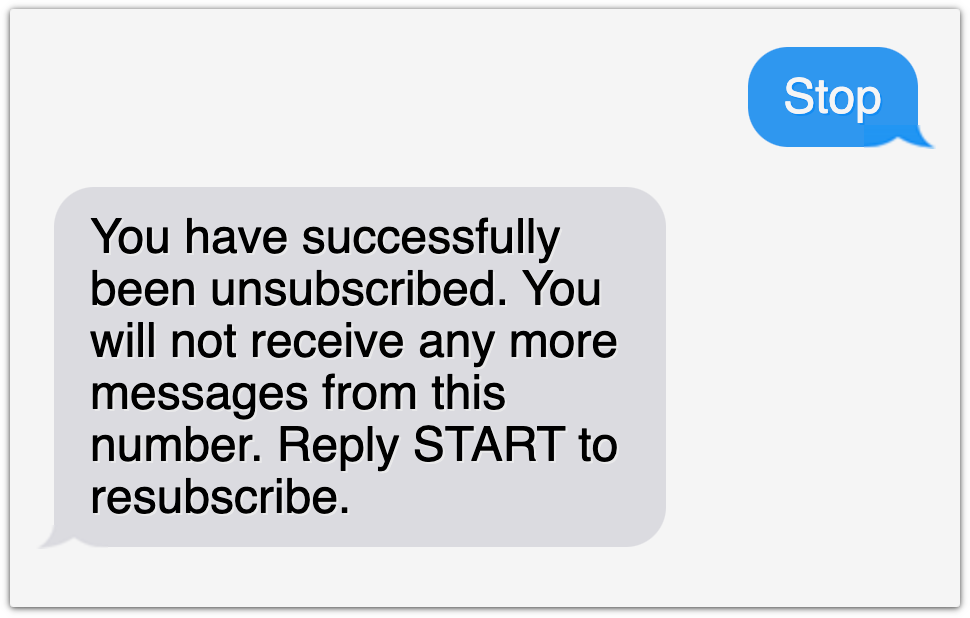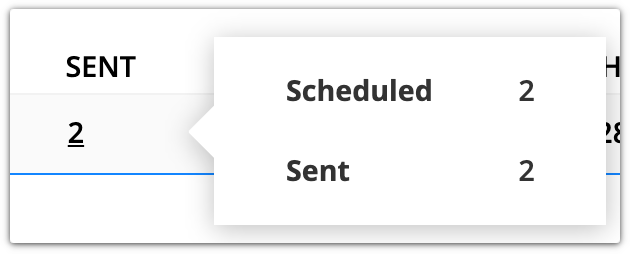This article will help you manage SMS messages. You'll learn how SMS filtering and blocking work, how to allow your contacts to opt in or out, and how to ensure sender compliance. We'll also cover how to view and manage one-off SMS messages, stop them when needed and track broadcast stats. Whether handling a few messages or running large campaigns, this article will walk you through the essentials to keep your SMS communications on point.
SMS messaging is available to all account levels.
Table of contents
SMS filtering and blocking
Opting in and out
Sender compliance message
View and manage one-off SMS messages
Stop a one-off SMS message
View broadcast stats
SMS filtering and blocking
To protect mobile users from fraud, spam, and other unwanted messages, Twilio blocks and filters certain SMS messages with problematic content. They also do this to comply with the rules set by carriers and regulators.
Here’s a summary of what will cause Twilio to block the messages you send to your contacts:
- High unsubscribe rates
- Public URL shorteners (bitly, tinyurl, etc.)
- Forbidden message categories for SMS/MMS in US and Canada
- Inappropriate content
- Transmitting or storing any content or communications (commercial or otherwise) that are illegal, harmful, unwanted, deceptive, inappropriate, objectionable, violating others’ rights, confirmed to be criminal misinformation or otherwise pose a threat to the public
- Harmful code or bots
- Transmitting code, files, scripts, agents or programs intended to do harm including viruses or malware and using bots to gain access to use services
- Hate speech
- Use of the services by a hate group, content or communications that originate from a hate group or sending exploitative, abusive or hate speech
Note, you will still be charged for filtered or blocked messages.
Opting in and out
Your contacts must opt in to receive SMS text messages either by filling out a form with their SMS number or by initiating communication by texting your Ontraport SMS number.
Note, if you would like to opt in contacts through the API or import a list of contacts who have already opted in, please contact Support.
Leads can opt in to your email and SMS marketing messages via text. This is a great way to collect leads from live events. At a minimum, they need to send you their email address, but you can also collect their names. Here are the three formats your leads can use to opt in:
- mscott@ontraport.com
- Melissa mscott@ontraport.com
- Melissa Scott mscott@ontraport.com

Sender compliance message
The first time you send a message to a contact, Ontraport adds the notification saved in your Sender Compliance Message field in your sender profile. Ontraport also sends this message if you haven’t had any engagement from your customers in over 18 months. Note that this message may increase your message count.
To opt out of receiving bulk SMS messages, contacts can text any of these words:
- Stop
- Unsubscribe
- Cancel
- Quit

After contacts reply to a text with an opt-out keyword, such as “STOP,” the only way for them to opt back in is to message “START.” Filling out a form, using an API key, or any other method won't update their bulk SMS status.
View and manage one-off SMS messages
All messages that you send manually to two or more contacts can be viewed and managed in your account’s Broadcast History. You can also view messages sent to a single contact if they were scheduled to send at a later time.
To get there go to Contacts → Broadcast History and, if you’d like to see only your SMS message, click Type: All and select SMS or Quick SMS.
Stop a one-off SMS message
If you choose to send an SMS immediately to two or more contacts, there will be a five-minute delay while it queues to send. This gives you time to cancel it if it was sent in error. You can also cancel SMS messages that you scheduled to send at a later time by following these steps:
- Select the broadcast(s) you wish to cancel.
- Click Cancel → Okay.
View broadcast stats
You can check the status of your manually sent SMS messages. Hover over the “sent” column to see the number of messages:
- Scheduled
- Sent
- Failed
The “failed” status will also show you why the messages were unable to be delivered.
The number you see in the sent column shows you how many contacts you’ve sent the message to — not the total number of segments. For example, if you send a two-segment message to 1000 contacts. You will see 1000 sends, but Twilio will charge you for each segment of the message — 2000 sends.
Download a prebuilt automation map SMS lead capture and nurture Perfect for collecting leads at live events, this automation map lets you capture emails by asking prospects to text their email address to your Ontraport SMS number in exchange for a free download. It's an easy and effective way to grow your list on the spot! Click here to download. |
